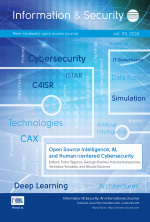Common Data Administration, Data Management, and Data Alignment as a Necessary Requirement for Coupling C4ISR Systems and M&S Systems
Source:
Information & Security: An International Journal,Abstract:
Within the application domain of military simulation systems, training and exercises as well as support to real operations require the coupling of the simulation system delivering the needed functionality with the Command, Control, Computing, Communications, Intelligence, Surveillance, and Reconnaissance (C4ISR) system providing the necessary data. The solution to this challenge is to build appropriate interfaces. Although in long term a more integrated approach will be necessary, in short and mid term, gateways and interfaces are likely to remain the standard. However, in order to succeed with the respective efforts, at least on the data level of interoperability, a common solution is necessary. Subsequently, in achieving interoperability issues like a common architecture, a common set of algorithms, and a common view of the world in the form of ontology, including dynamic aspects, can be addressed as well. First of all, however, in order to make a meaningful integration possible, the common data issue has to be dealt with. The methods used to achieve this are not only applicable to the coupling of Modeling and Simulation (M&S) and C4ISR systems, they are necessary in preparing the coupling/integration of different C4ISR systems as well, e.g., to prepare a common operation with new partners and allies. Therefore, it is a general approach to interoperability. The paper outlines some of the work done in this field on international level and draws some conclusions for future work.
